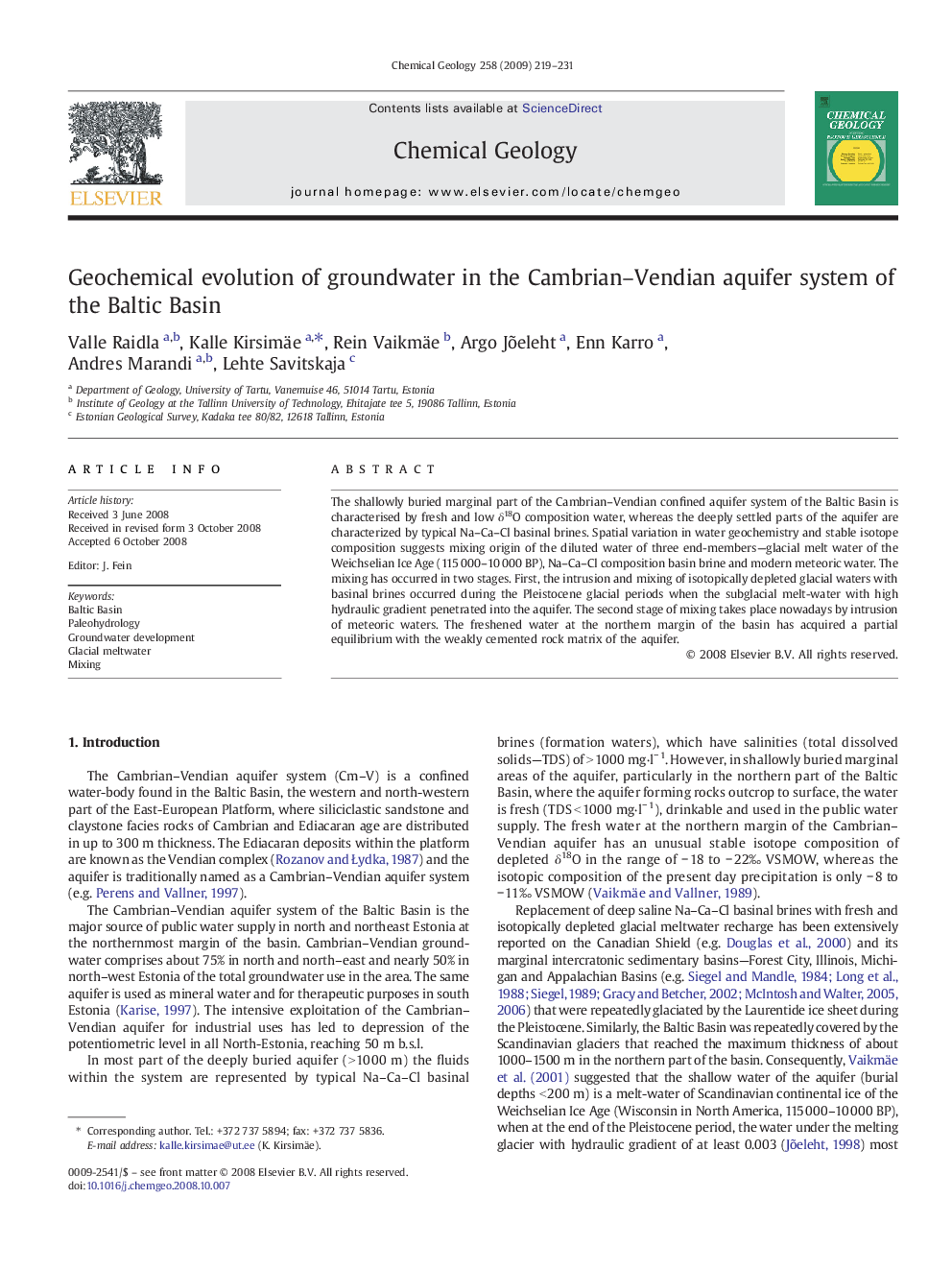| Article ID | Journal | Published Year | Pages | File Type |
|---|---|---|---|---|
| 4700424 | Chemical Geology | 2009 | 13 Pages |
The shallowly buried marginal part of the Cambrian–Vendian confined aquifer system of the Baltic Basin is characterised by fresh and low δ18O composition water, whereas the deeply settled parts of the aquifer are characterized by typical Na–Ca–Cl basinal brines. Spatial variation in water geochemistry and stable isotope composition suggests mixing origin of the diluted water of three end-members—glacial melt water of the Weichselian Ice Age (115 000–10 000 BP), Na–Ca–Cl composition basin brine and modern meteoric water. The mixing has occurred in two stages. First, the intrusion and mixing of isotopically depleted glacial waters with basinal brines occurred during the Pleistocene glacial periods when the subglacial melt-water with high hydraulic gradient penetrated into the aquifer. The second stage of mixing takes place nowadays by intrusion of meteoric waters. The freshened water at the northern margin of the basin has acquired a partial equilibrium with the weakly cemented rock matrix of the aquifer.
